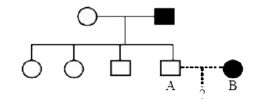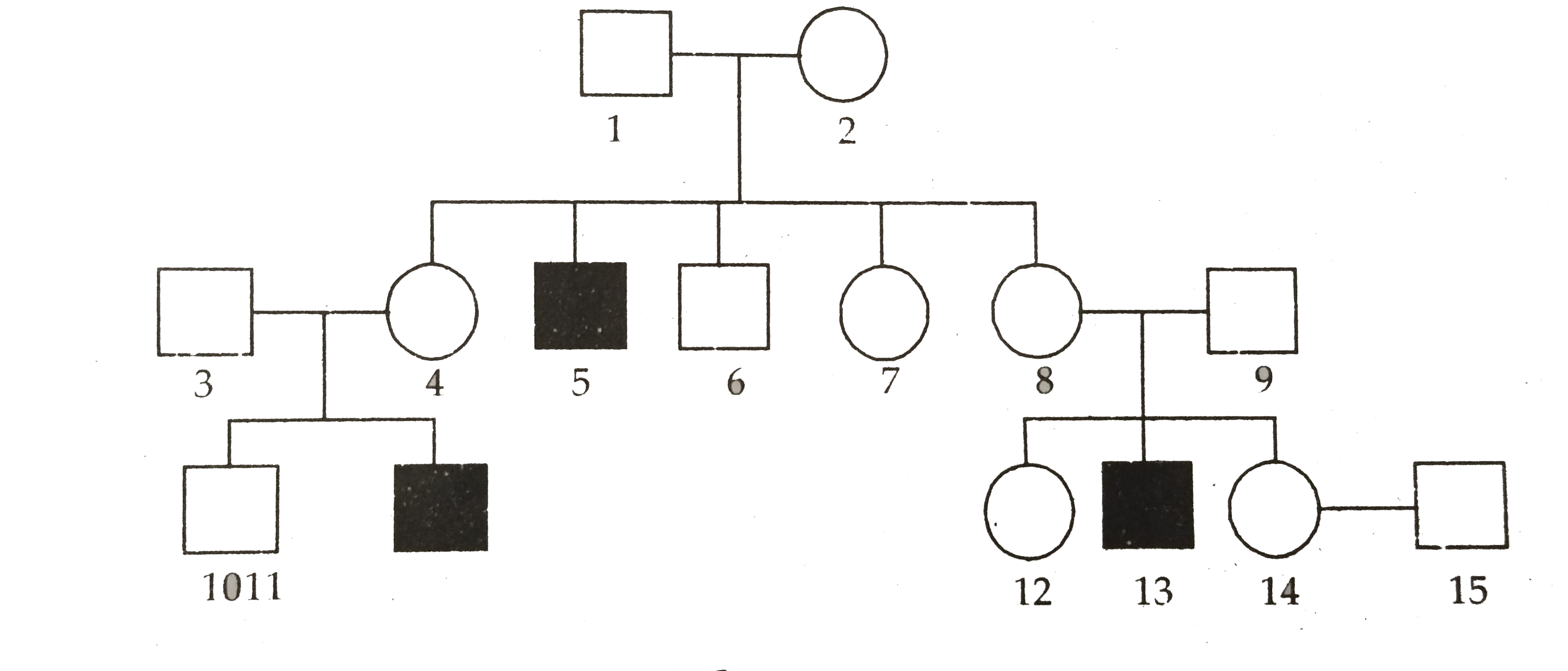While studying an autosomal recessive disorder in a family . It was noted that husband and wife both did not suffer from disease but their fathers had the disease. What is the probability that the couple will have a girl child without the disorder ?
12
34
38
18
The correct Answer is:C
To solve the problem of determining the probability that a couple will have a girl child without an autosomal recessive disorder, we can break down the solution step by step:
Step 1: Understand the Genotypes
The disorder in question is autosomal recessive. This means:
- Individuals with the genotype AA (homozygous dominant) are normal.
- Individuals with the genotype Aa (heterozygous) are carriers and also normal.
- Individuals with the genotype aa (homozygous recessive) are affected by the disorder.
Step 2: Determine the Genotypes of the Parents
The problem states that both the husband and wife do not suffer from the disease, but their fathers do. This implies:
- The fathers of both the husband and wife have the genotype aa (affected).
- Since the fathers are aa, they can only pass on the a allele to their children.
- Therefore, both the husband and wife must be carriers, having the genotype Aa (heterozygous).
Step 3: Set Up a Punnett Square
To find the probability of their offspring's genotypes, we can use a Punnett square. The gametes from each parent (both Aa) will be:
- Male gametes: A and a
- Female gametes: A and a
The Punnett square will look like this:
| | A | a |
|-------|-------|-------|
| A | AA | Aa |
| a | Aa | aa |
Step 4: Analyze the Outcomes
From the Punnett square, we can see the possible genotypes of the offspring:
- 1 AA (normal)
- 2 Aa (carriers, normal)
- 1 aa (affected)
This gives us a total of 4 outcomes:
- 3 out of 4 (AA + Aa + Aa) are normal (no disorder).
- 1 out of 4 (aa) is affected.
Step 5: Calculate the Probability of Having a Girl Child
The question asks for the probability of having a girl child without the disorder. We know:
- The probability of having a normal child is 3/4.
- The probability of having a girl child is 1/2.
Step 6: Combine the Probabilities
To find the probability of having a girl child without the disorder, we multiply the two probabilities:
Probability of normal child×Probability of girl child=34×12=38
Final Answer
The probability that the couple will have a girl child without the disorder is 3/8.
---
The disorder in question is autosomal recessive. This means:
- Individuals with the genotype AA (homozygous dominant) are normal.
- Individuals with the genotype Aa (heterozygous) are carriers and also normal.
- Individuals with the genotype aa (homozygous recessive) are affected by the disorder.
The problem states that both the husband and wife do not suffer from the disease, but their fathers do. This implies:
- The fathers of both the husband and wife have the genotype aa (affected).
- Since the fathers are aa, they can only pass on the a allele to their children.
- Therefore, both the husband and wife must be carriers, having the genotype Aa (heterozygous).
To find the probability of their offspring's genotypes, we can use a Punnett square. The gametes from each parent (both Aa) will be:
- Male gametes: A and a
- Female gametes: A and a
|-------|-------|-------|
| A | AA | Aa |
| a | Aa | aa |
From the Punnett square, we can see the possible genotypes of the offspring:
- 1 AA (normal)
- 2 Aa (carriers, normal)
- 1 aa (affected)
- 3 out of 4 (AA + Aa + Aa) are normal (no disorder).
- 1 out of 4 (aa) is affected.
The question asks for the probability of having a girl child without the disorder. We know:
- The probability of having a normal child is 3/4.
- The probability of having a girl child is 1/2.
To find the probability of having a girl child without the disorder, we multiply the two probabilities:
Probability of normal child×Probability of girl child=34×12=38
The probability that the couple will have a girl child without the disorder is 3/8.
Similar Questions
Both father and mother have allele for PKU but are phenotypically normal. What is the probability that their child will have the disease?
View SolutionIn the pedigree shown below, individuals with the solid symbols suffers from albinism. You would counsel the couple A & B that the probability that each of their child will have the disease is :-

View SolutionIf a mother and father both have one mutant gene for a disease with an autosomal dominant inheritance, what is their risk of having an affected child?
View SolutionCystic fibrosis is an autosomal recessive disease . In an island having a population of 200 people, 98 people suffer from cystic fibrosis. How many people are carrier of this disease ?
View SolutionBoth husband and wife have normal vision though their father were colour blind and mother did not have any gene for colour blindness .The probability of their daughter becoming colour blind is :
View SolutionFree ear lobe in humans is an autosomal dominant trait. The recessive individuals show fused ear lobes. A child with fused ear lobes is born to a couple who have free ear lobes. What is the probability of their next child to be with free ear lobes?
View SolutionIf both the parents are carriers of autosomal r recessive disorder thalassemia , what are the chances of pregnancy resulting in an affected child
View SolutionFirst child of a normal couple is suffering from sickle cell anaemia. The possibility of a second child having the disorder is
View SolutionLesch Nyhan disease is an X-linked recessive disorder that causes neurological damage in human beings. A survey of 500 males from a caucasion population revealed that 20 were effected with this disorder. What is the frequency of the normal allele in this population ?
View SolutionHaemophilia is a sex linked recessive disorder of humans. The pedigree chart given below shows the inheritance of haemophilia in one family. Study the pattern of inheritance and answer the questions given

Give all the possible genotypes of the members 4,5 and 6 in the pedigree chart.
(b) A blood test shows that the individual 14 is a carrier of haemophilia. The member numbered 15 has recently married the member numbered 14. What is the probability that their first child will be a haemophilic male? Show with the help of Punnett square.
View Solution
